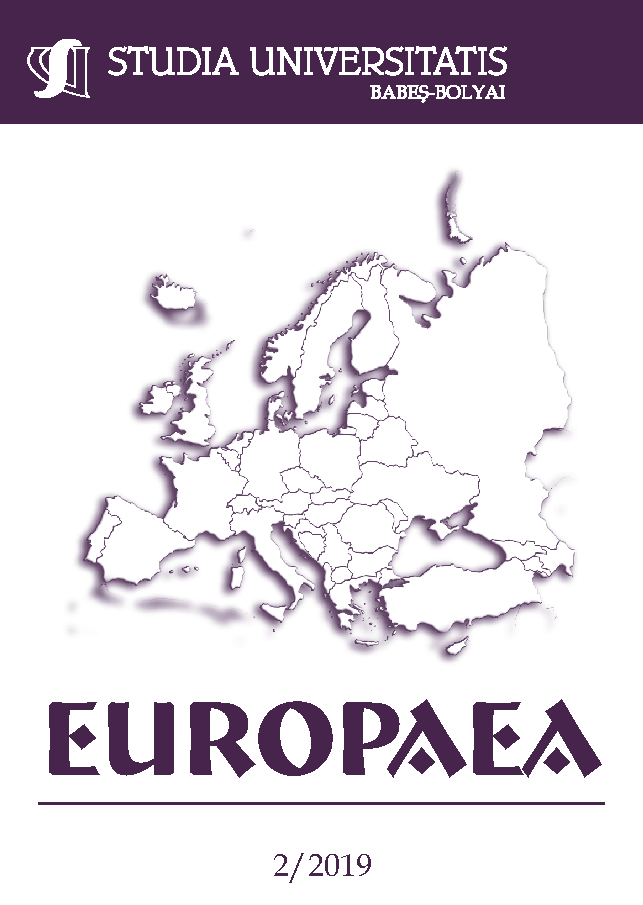FUNDAMENTALS OF DIPLOMATIC PROTOCOL
DOI:
https://doi.org/10.24193/subbeuropaea.2019.2.17Keywords:
diplomatic protocol, etiquette, ceremonial, precedence, functions of protocol, applications of protocolAbstract
Every so often indistinctly designated as both ceremonial and etiquette, diplomatic protocol has come to encapsulate all the formal ingredients bearing on practices of diplomacy and which are not their substantive or factual constituents. Albeit rather decorative, pretentious and ostentatious, protocol in diplomacy has had the commanding role of facilitating diplomatic encounters, communications and negotiations. However, beyond its undeniable merit as the very environment of common sense pertaining to good manners, appropriate behavior and deferent courtesy, diplomatic protocol could be analytically comprehended distinguishing between the variety of nuances and connotations so frequently amalgamated within the conventional nomen of protocol. The present study attempts at clarifying and discerning the plethora of its significances and appropriations. Accordingly, a cautious understanding of protocol references should carefully delineate between protocol and etiquette, protocol and ceremonial, and protocol as precedence, in addition to looking for the proper functions and applications of diplomatic protocol.
References
Anderson, Matthew S. (1993), The Rise of Modern Diplomacy 1450-1919, London and New York: Routledge.
Berridge, G. R. (2011), The Counter-Revolution in Diplomacy and Other Essays, New York: Palgrave Macmillan.
Corpădean, Adrian-Gabriel (2014), ”The State of the Union Address – A Useful EU Communication Endeavour under American Inspiration?”, in Iulian Boldea (ed.), Globalization and Intercultural Dialogue: Multidisciplinary Perspectives, Târgu-Mureş: Arhipelag XXI, 157-164.
Corpădean, Adrian-Gabriel (2018), ”Assessing Romania‘s Strategic Partnerships – Recent Endeavours in Romanian-Moldavian Relations”, Der Donauraum, Zeitschrift des Institutes für den Donauraum und Mitteleuropa no. 56 (25 Years of Development in the Post-Soviet Space: Civil Society and Participatory Democracy), Vienna, 107-121.
French, Mary Mel (2010), United States Protocol: The Guide to Official Diplomatic Etiquette, Lanham: Rowman & Littlefield.
Hecht, Alice; Boulgaris, Jean-Marc; Jazairy, Idriss (2015), Practices of Diplomatic Protocol in Geneva, Geneva: UNITAR.
Jonsson, Christer; Hall, Martin (2005), Essence of Diplomacy, New York: Palgrave Macmillan.
Kopp, Harry W.; Gillespie, Charles A. (2011), Career Diplomacy: Life and Work in the US Foreign Service, Washington DC: Georgetown University Press.
McConnell, Fiona; Dittmer, Jason (2016), ”Diplomatic Culture”, in Costas M. Constantinou, Pauline Kerr and Paul Sharp (eds.), The SAGE Handbook of Diplomacy, London: SAGE Publications, 104-113.
Rana, Kishan S. (2011), 21st Century Diplomacy: A Practitioner's Guide, London and New York: Continuum.
Spies, Yolanda Kemp (2019), Global Diplomacy and International Society, Springer: Palgrave Macmillan.
Wood, John R.; Serres, Jean (1971), Diplomatic Ceremonial and Protocol: Principles, Procedures & Practices, London: Palgrave Macmillan.
Downloads
Published
How to Cite
Issue
Section
License
Copyright (c) 2019 Studia Universitatis Babeș-Bolyai Europaea

This work is licensed under a Creative Commons Attribution-NonCommercial-NoDerivatives 4.0 International License.






